Unveiling the Majestic Stature of Snowy Owls: Exploring Their Impressive Dimensions
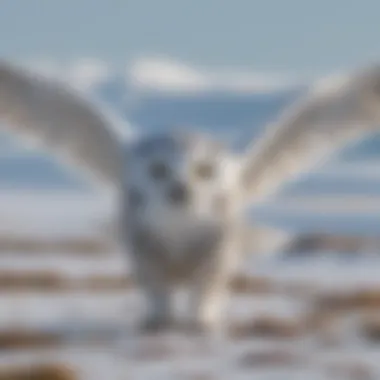
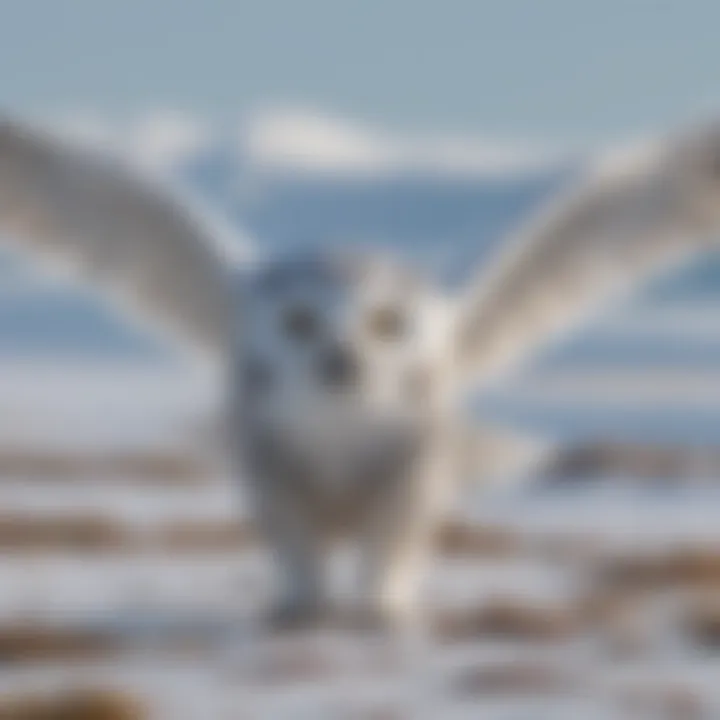
Nature Topic Overview
Snowy owls, magnificent Arctic creatures, embody nature's brilliance in their sheer size, weighty presence, and expansive wingspan. These awe-inspiring birds navigate the frigid Arctic landscapes with grace and power, showcasing remarkable adaptations for survival in harsh conditions. Their distinct features and unique behaviors make them a captivating subject of study.
Fun Facts and Trivia
- Did you know that snowy owls have a wingspan of up to 5 feet, allowing them to soar majestically through the Arctic skies? Their pure white feathers help them blend seamlessly into the snow-covered terrain, making them excellent hunters. Witnessing a snowy owl in flight is a sight to behold, a silent predator in pursuit of its next meal.
- Snowy owls are known for their distinctive yellow eyes, gazing intensely from their round faces. These keen eyesight aids in spotting prey from great distances, showcasing their prowess as skilled hunters in their icy domain. Young readers will be fascinated by the sharp talons and powerful beak that enable snowy owls to catch and consume their preferred meals of lemmings and Arctic rodents.
Wildlife Explorations
As we delve deeper into the Arctic ecosystem, we encounter a myriad of fascinating species that coexist with snowy owls. From elusive Arctic foxes with their pristine fur coats to resilient caribou migrating across vast tundras, each animal plays a crucial role in this delicate habitat. Interactive quizzes and puzzles can engage young minds in discovering the interconnectedness of Arctic wildlife and the adaptations that enable survival in extreme conditions.
Environmental Awareness
The conservation of Arctic habitats is vital to safeguarding the future of majestic creatures like the snowy owl. Children have the power to make a difference by learning about sustainable practices and raising awareness about environmental protection. Simple tips, such as reducing waste and supporting wildlife conservation organizations, can empower children to become stewards of the environment and champions for nature's preservation.
DIY Nature Activities
Encourage young adventurers to connect with nature through hands-on activities inspired by the Arctic wilderness. From crafting paper snowy owls to creating miniature Arctic landscapes, these DIY projects ignite creativity and promote appreciation for the natural world. Guided outdoor explorations offer children the opportunity to apply their newfound knowledge, fostering a deeper understanding of Arctic ecosystems and the importance of conservation efforts.
Introduction
Snowy owls, these magnificent creatures of the Arctic, demand our attention and admiration. Understanding their physical dimensions goes beyond mere fascination; it unravels a world of adaptation and survival finely tuned to their harsh environment. As we delve into the intricate details of their size, weight, and wingspan, we peel back the layers of mystery shrouding these avian marvels. This article serves as a compass, guiding us through the vast landscape of snowy owl characteristics and shedding light on the profound significance they hold in the ecosystem. It is not just about knowing 'how big' snowy owls are; it is about unraveling a tapestry of precision and evolution that has shaped these birds into Arctic royalty.
Physical Dimensions of Snowy Owls
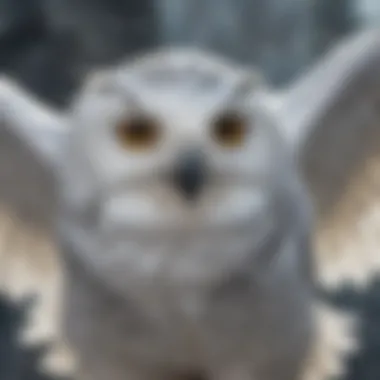
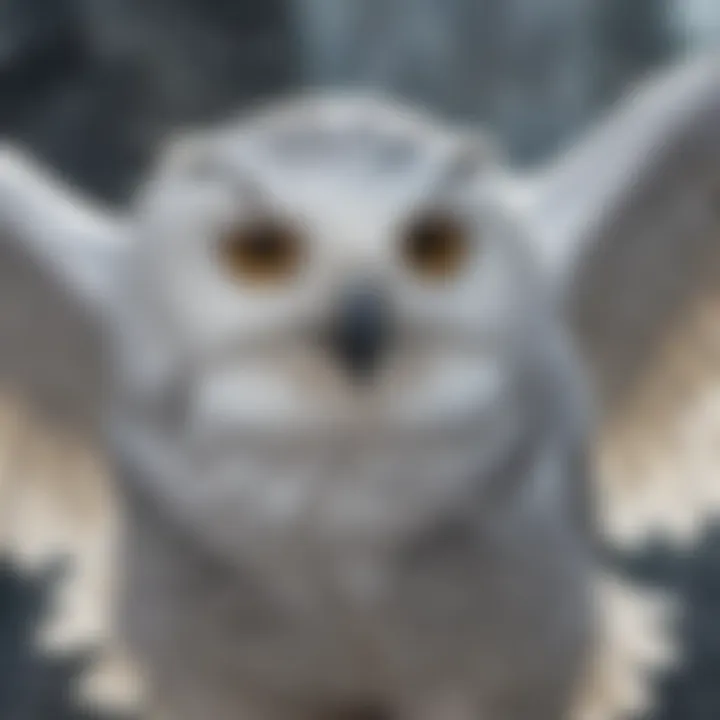
Snowy owls have captivated the imagination of wildlife enthusiasts and researchers alike due to their impressive physical dimensions. Understanding the size, weight, and wingspan of snowy owls is paramount in appreciating their unique characteristics and adaptations. This section delves into the key elements surrounding the physical dimensions of snowy owls, shedding light on how these attributes play a crucial role in their Arctic habitat survival.
Size of Snowy Owls
Snowy owls exhibit notable size variations between adult males and females, with each gender having distinct physical attributes. Adult male snowy owls typically showcase a larger body structure compared to their female counterparts. This difference in size influences various aspects of their behavior and hunting strategies, making it a crucial aspect to explore in this article. Understanding the size disparities between adult male and female snowy owls provides valuable insights into their ecological roles and evolutionary adaptations in their Arctic environment.
Adult Male Snowy Owls
Adult male snowy owls boast a robust physique, characterized by broad wings, a sizable beak, and striking plumage. These features contribute significantly to their hunting prowess and territorial dominance in the Arctic tundra. The larger size of adult male snowy owls enables them to cover greater distances during hunting expeditions and defend their territories effectively against competing predators. Despite their impressive size, adult male snowy owls face challenges related to energy expenditure and food availability due to their increased metabolic demands.
Adult Female Snowy Owls
In contrast, adult female snowy owls display a more compact physique, with relatively slimmer wings and a smaller beak compared to males. This physical difference serves specific purposes, such as enhancing agility during flight and nesting activities. The smaller size of adult female snowy owls enables them to maneuver efficiently in their Arctic habitat, especially during breeding seasons and while caring for their offspring. Despite their smaller stature, adult female snowy owls exhibit remarkable resilience and adaptive capabilities crucial for their survival in the harsh Arctic conditions.
Weight of Snowy Owls
Wingspan of Snowy Owls
Comparison with Other Owl Species
When delving into the world of snowy owls and their magnificent physical dimensions, it is imperative to compare them with other owl species to truly appreciate their unique characteristics and adaptations for Arctic survival. Snowy owls, scientifically known as Bubo scandiacus, stand out among owl species due to their impressive size, weight, and wingspan, setting them apart from their counterparts.
Snowy owls are one of the largest owl species, with adult males typically measuring about 53-65 centimeters (21-25.5 inches) in length and weighing around 1.6-2.3 kilograms (3.5-5 pounds). In comparison, adult female snowy owls tend to be slightly larger, reaching lengths of 55-70 centimeters (21.5-27.5 inches) and weighing approximately 2-3 kilograms (4.5-6.5 pounds). These dimensions significantly exceed those of many other owl species, highlighting the exceptional stature of snowy owls.
The wingspan of snowy owls further underscores their impressive physical attributes, with adults boasting wingspans ranging from 125-150 centimeters (49-59 inches). This vast wingspan enables snowy owls to soar gracefully through the Arctic skies, showcasing their proficiency in hunting and survival in harsh Arctic environments.
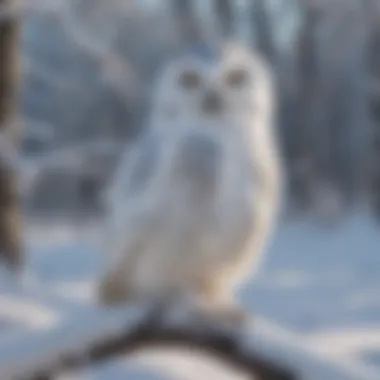

Contrasting snowy owls with other owl species reveals the distinctive features that equip them for life in the Arctic. By examining these differences and similarities, we gain a nuanced understanding of how snowy owls have evolved to thrive in their icy habitats, making them a fascinating subject of study for researchers and enthusiasts alike.
Factors Influencing Size Variation
In the exploration of the physical dimensions and characteristics of snowy owls, understanding the factors influencing size variation becomes paramount. The size of these majestic birds is not static but can vary significantly due to various factors that play a crucial role in their development and survival. By delving into these factors, we gain a deeper insight into the intricate mechanisms that contribute to the diversity in size observed among snowy owls. This section will dissect the specific elements that influence size variation, highlighting their importance in shaping the morphology and behavior of these Arctic birds.
Geographical Variation
Geographical variation is a key aspect to consider when unravelling the mysteries of snowy owl size. Snowy owls inhabit vast territories across the Arctic region, encountering diverse environmental conditions that can directly impact their physical attributes. From the icy landscapes of Canada to the tundra regions of Alaska, geographical factors such as temperature, food availability, and habitat characteristics profoundly influence the size variations observed among snowy owl populations. By exploring how geographical nuances shape the size of snowy owls, we unlock a deeper understanding of the intricate relationship between these majestic birds and their environment. This section will illuminate the geographical influences on snowy owl size with meticulous detail, providing a comprehensive overview of this critical aspect of their biology.
Age and Health of Snowy Owls
The age and health of snowy owls are intrinsic factors that significantly impact their size and overall well-being. As these Arctic birds mature and navigate the challenges of their harsh environment, their age plays a crucial role in determining their size and physical fitness. Furthermore, the health status of snowy owls, influenced by factors such as diet quality and environmental conditions, can directly correlate with variations in their size. Understanding how age and health interplay in shaping the size of snowy owls provides a window into the complex dynamics of their survival strategies and adaptation to the Arctic landscape. This section will delve into the nuances of age-related size variations and the pivotal role of health in determining the physical characteristics of snowy owls, shedding light on the intricate web of factors that contribute to their survival in the unforgiving Arctic terrain.
Section 5: Implications of Size on Hunting and Survival
Snowy owls exhibit intricate relationships between their physical size and their hunting and survival strategies in the harsh Arctic environment. Understanding how their size influences their ability to hunt and thrive is essential to appreciate the remarkable nature of these majestic birds.
Size and Hunting Efficiency
The large size of adult snowy owls, with males typically ranging from 20 to 25 inches and females slightly larger, plays a crucial role in their hunting endeavors. This increased size enables them to take down larger prey, such as lemmings and ptarmigans, essential for sustaining their energy in the Arctic tundra. Additionally, their robust build and powerful talons help them seize and subdue their prey with precision, showcasing the direct correlation between size and hunting efficiency.
Survival Tactics
Apart from hunting, the size of snowy owls directly impacts their survival tactics. During harsh Arctic winters, the ability to withstand extreme cold temperatures becomes paramount. The insulation provided by their thick plumage helps retain body heat, essential for surviving frigid conditions. Larger owls possess a higher volume-to-surface ratio, reducing heat loss and enhancing their chances of enduring the severe climate.
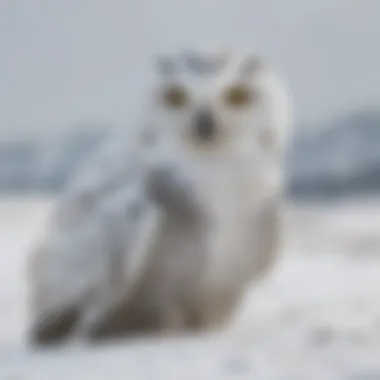
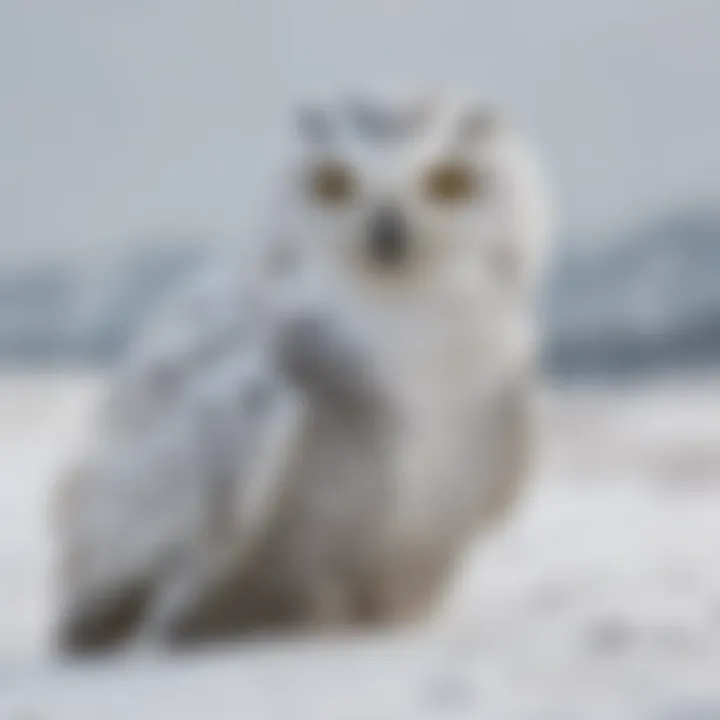
Behavioral Adaptations
Snowy owls also exhibit behavioral adaptations that are intricately linked to their size. Their large wingspan, which can reach up to 4.8 feet, allows for efficient gliding and soaring, critical for covering vast Arctic territories in search of prey. Moreover, their keen eyesight, honed through generations of evolution, combined with their size, enhances their ability to spot potential prey from a distance, giving them a strategic advantage in their hunting expeditions.
Considering the demanding environment of the Arctic and the challenges it poses, the implications of snowy owls' size on both hunting and survival are profound. By delving into the interplay between size, adaptation, and behavior, we gain a deeper appreciation for the awe-inspiring resilience of these magnificent Arctic predators.
Implications of Size on Hunting and Survival
When delving into the intriguing world of snowy owls, one cannot overlook the critical aspect of size and its profound implications on their hunting and survival strategies. The size of these majestic creatures plays a pivotal role in defining their interactions within their Arctic environment.
Importance of Size in Hunting
The substantial size of snowy owls directly influences their hunting prowess. With larger bodies and wingspans, these birds possess the physical capabilities to soar across vast expanses in search of prey. The size advantage grants them enhanced agility and strength, crucial for capturing elusive prey such as lemmings and other small mammals that thrive in the harsh Arctic landscape.
Adaptations for Survival
Size also serves as a key factor in the survival mechanisms of snowy owls. Their large size provides insulation against the extreme cold temperatures prevalent in the Arctic regions. Additionally, the sheer physical presence and formidable size act as deterrents against potential predators, ensuring the safety and security of the snowy owl population.
Environmental Considerations
Moreover, the size of snowy owls influences their overall ecological impact. As top predators in their habitat, their size contributes to maintaining ecological balance by controlling the population of smaller prey species. This cascading effect underscores the integral role of size not only in the individual survival of snowy owls but also in the broader ecological dynamics of the Arctic ecosystem.
Behavioral Adaptations
Beyond physical attributes, the size of snowy owls shapes their behavioral adaptations for hunting and survival. Their size dictates their approach to hunting strategies, communication methods, and territorial behaviors, showcasing the profound influence of size on their overall lifestyle.
Conclusion
At the core of this comprehensive exploration lies the fundamental significance of acknowledging the majestic stature and unique attributes that snowy owls embody. By unraveling the mysteries surrounding their size, weight, wingspan, and Arctic survival strategies, we not only gain insights into the intricate workings of nature but also foster a deeper sense of appreciation for the resilience and beauty of these Arctic avians.
Moreover, the conclusion offers a reflection point on the interplay between snowy owls and their environment, elucidating how their adaptations serve as a testament to the marvels of evolutionary biology. Understanding the nuances of size variation, feather density, coloration, and behavioral adaptations equips us with a profound appreciation for the delicate balance sustained by these creatures in their harsh Arctic habitats.
In essence, the conclusion of this article serves as a tapestry weaving together the threads of knowledge and admiration for snowy owls, inviting readers to contemplate the intricate dynamics of nature's design. From the expansive wingspan facilitating their aerial prowess to the subtle variations in size reflecting environmental influences, every aspect discussed culminates in a mosaic of enlightenment and reverence for these awe-inspiring birds.







